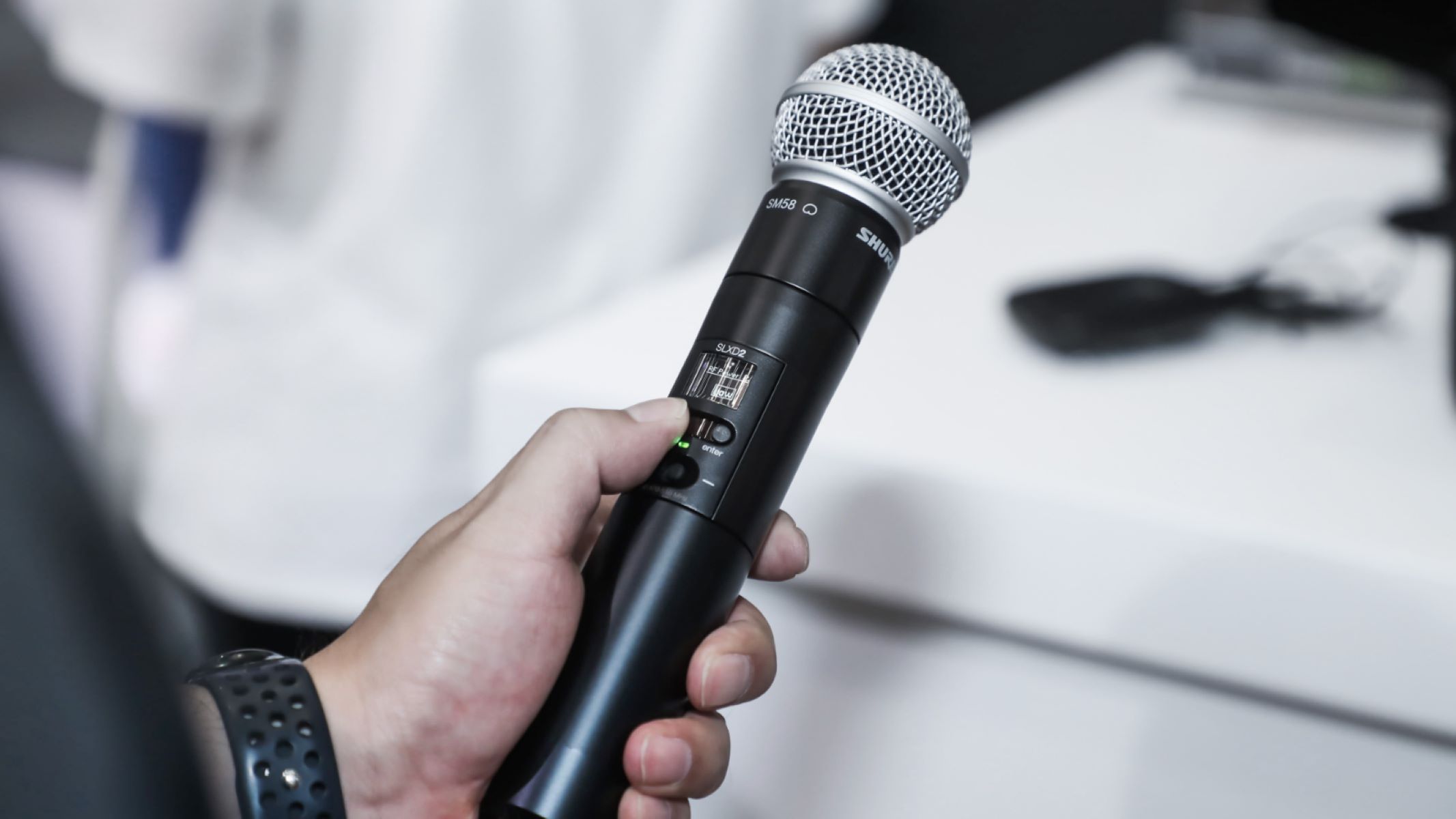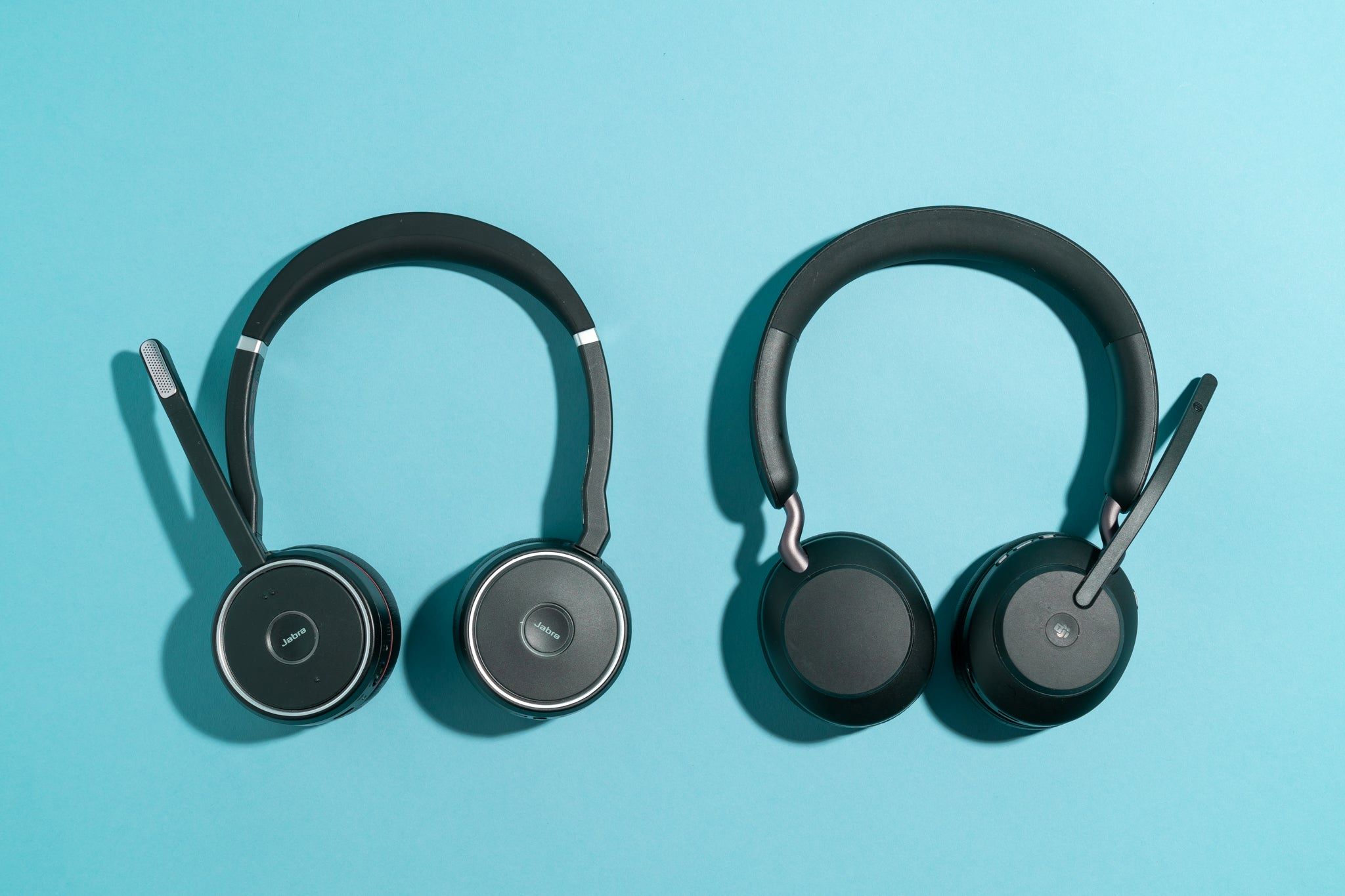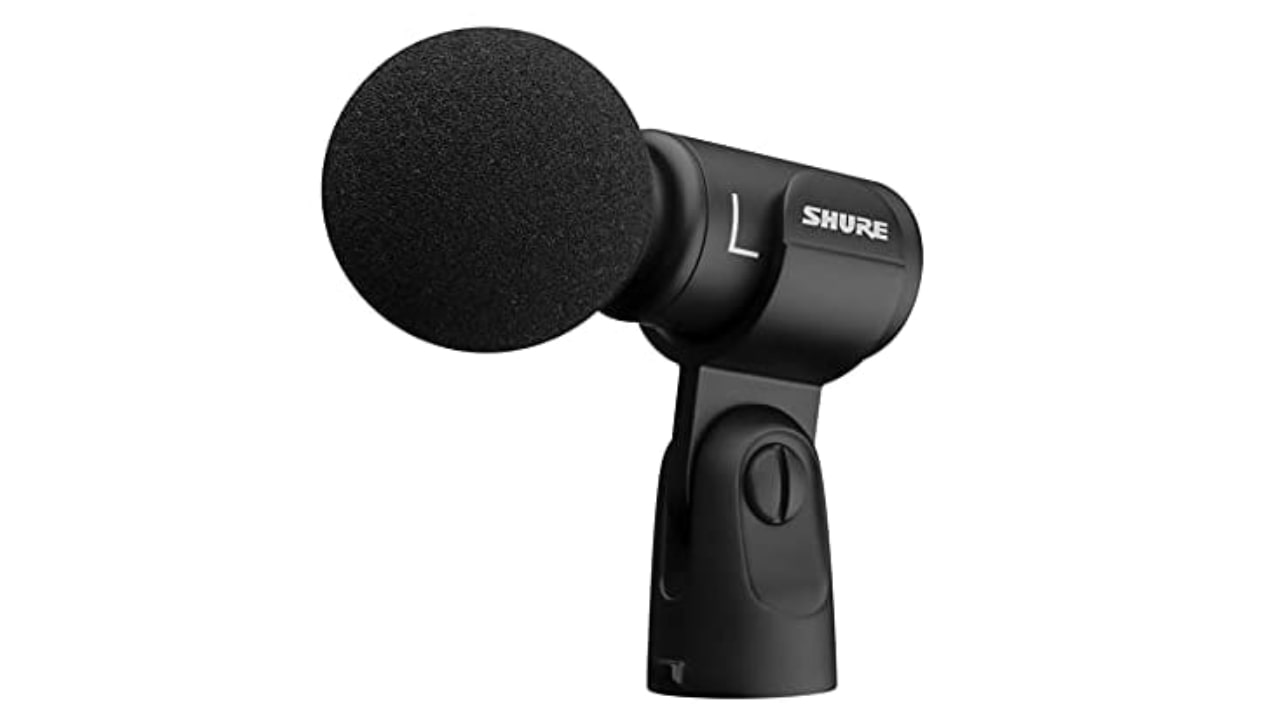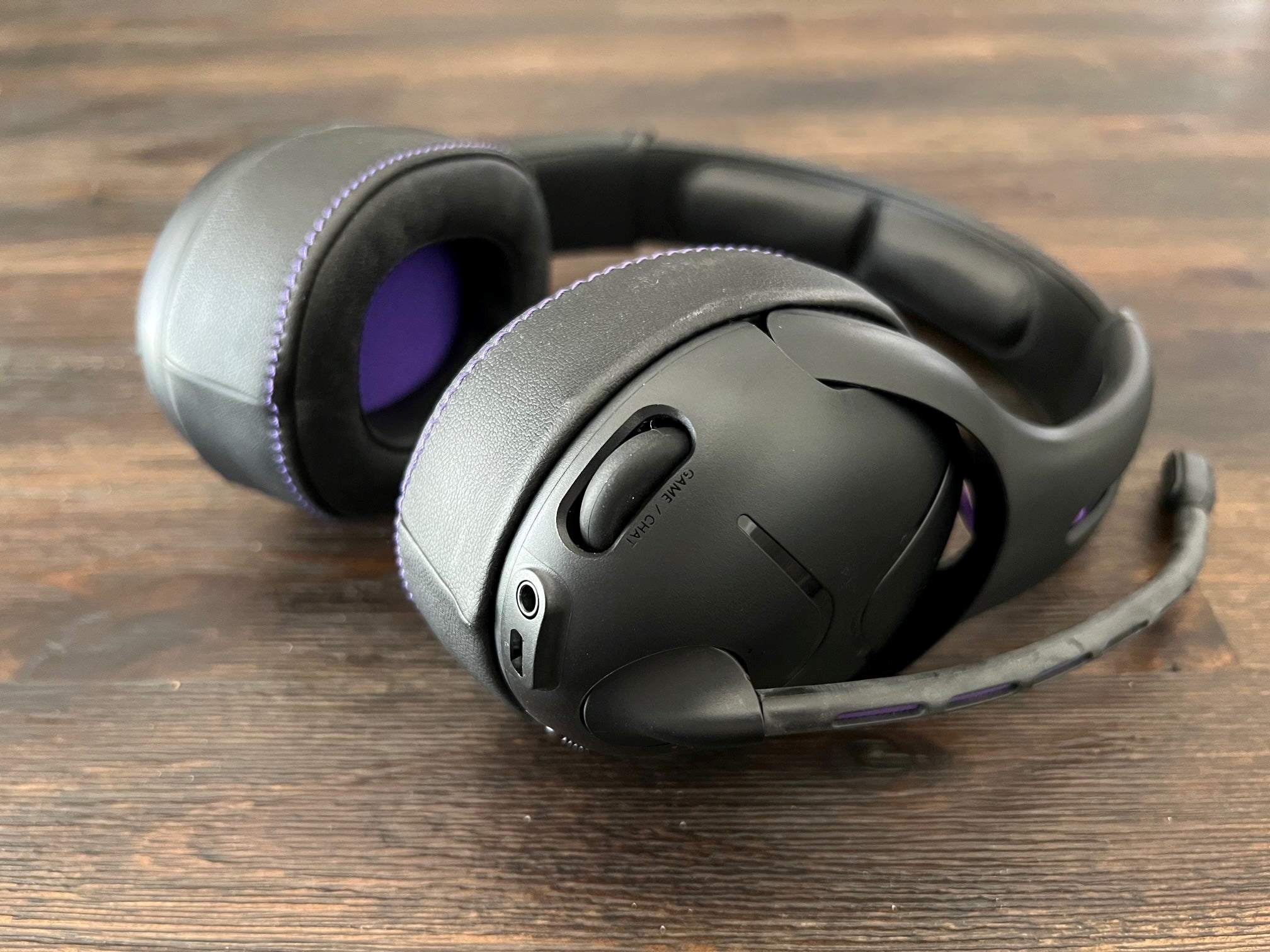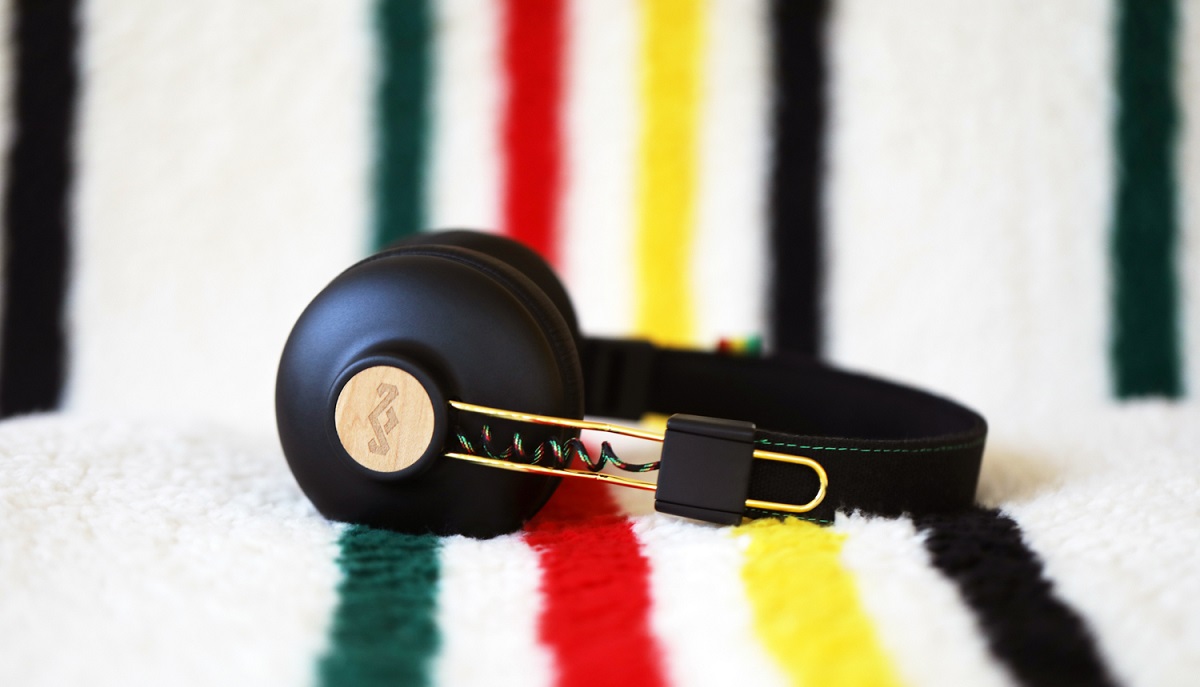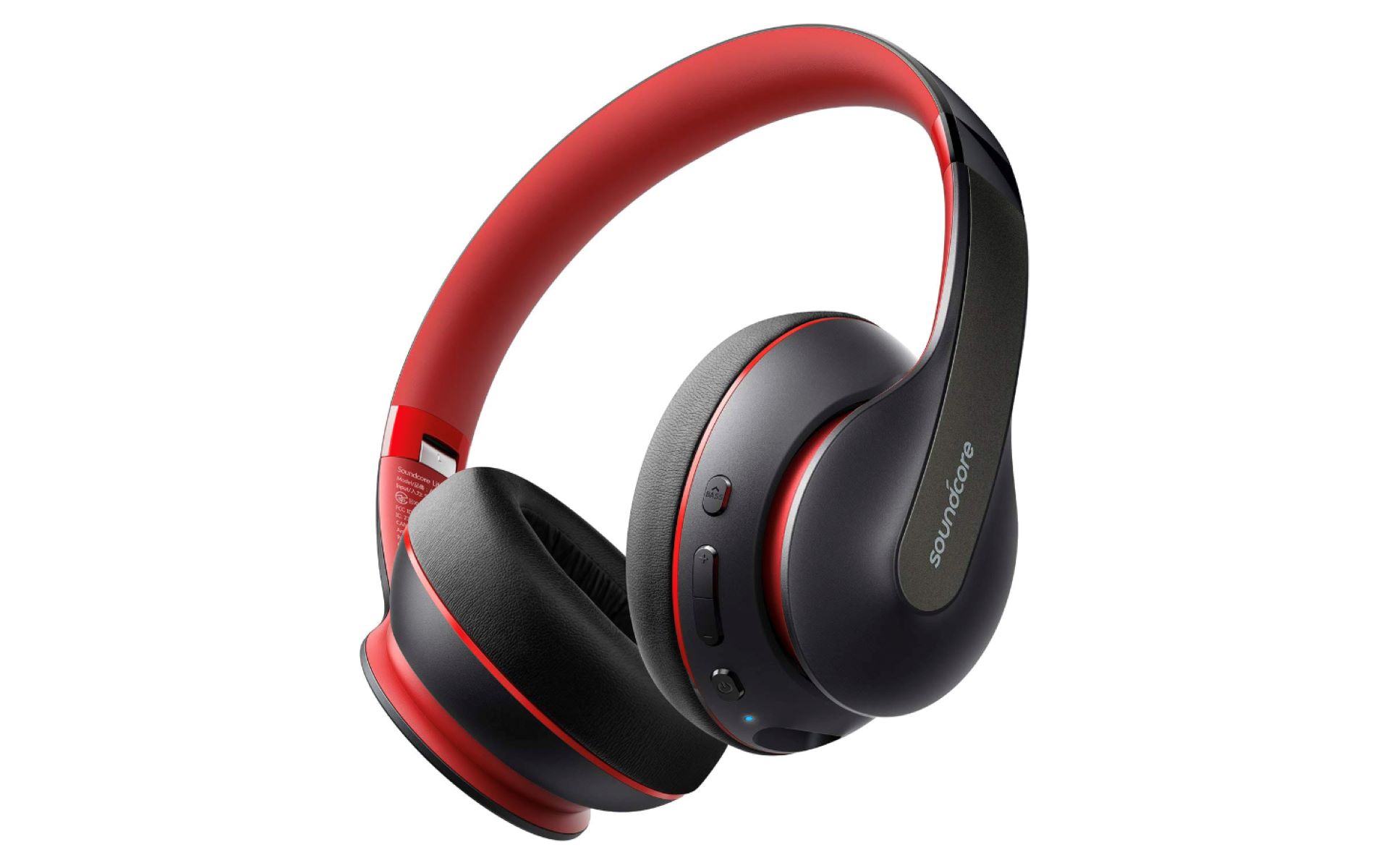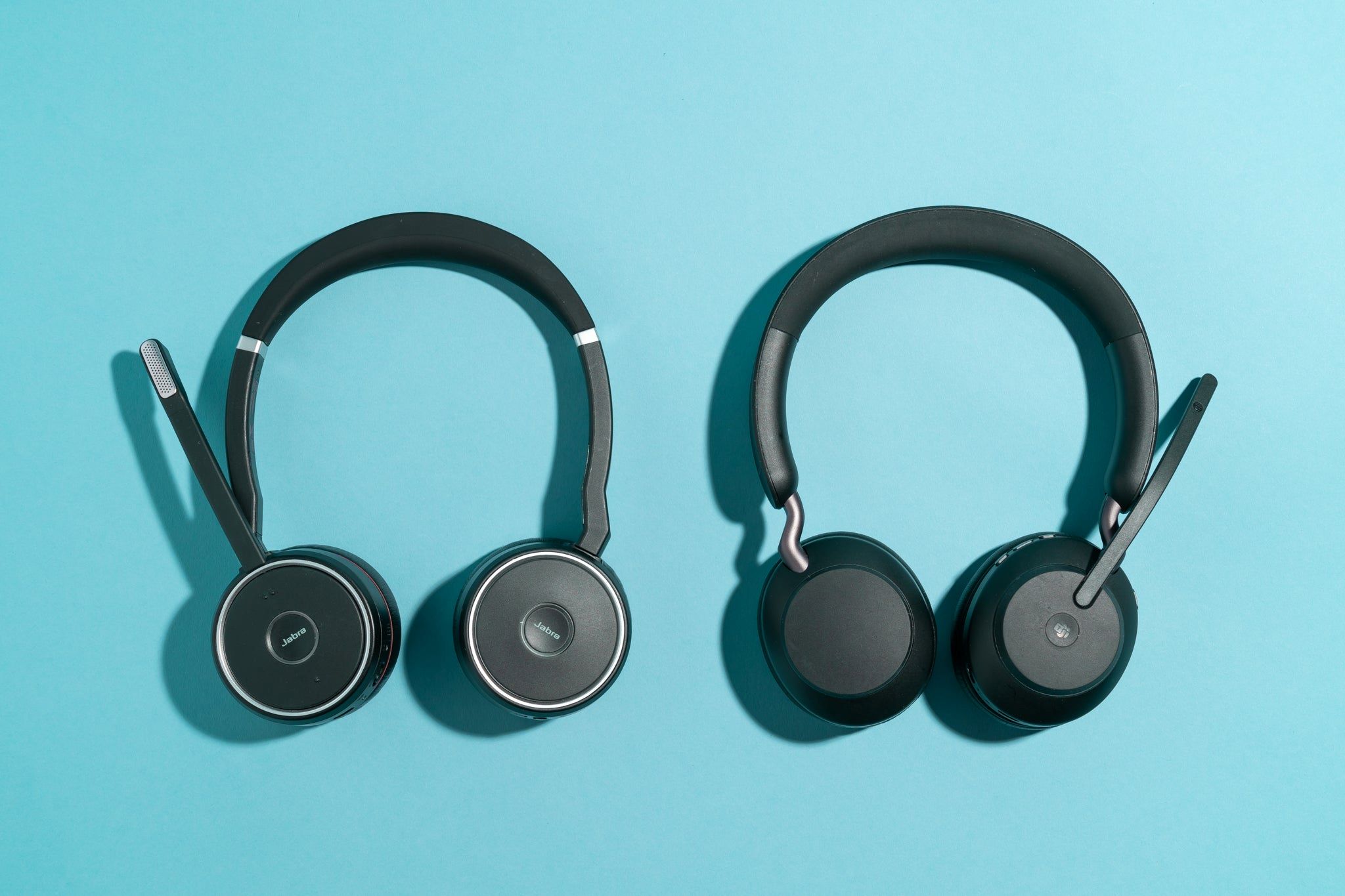Introduction
Welcome to the world of wireless microphones, where freedom of movement meets crystal-clear audio. Whether you’re hosting a live event, performing on stage, or filming a video, wireless microphones offer the convenience and flexibility that traditional wired microphones can’t match. By eliminating the need for bulky cables, wireless microphones revolutionize the way audio is captured and transmitted.
But how exactly do wireless microphones work? In this article, we’ll delve into the inner workings of wireless microphone systems, explore the different components involved, and discuss the advantages and challenges of using wireless microphones.
At its core, a wireless microphone is a portable device that allows the user to transmit audio signals wirelessly to a receiver without the need for physical connections. This enables performers, presenters, and speakers to freely move around on stage or in a venue while maintaining high-quality sound.
The basic principle of a wireless microphone involves capturing sound through a handheld or lavalier microphone, converting it into a radio signal, and wirelessly transmitting it to a receiver. The receiver then converts the radio signal back into an audio signal, which can be connected to a sound system or recording device.
Wireless microphone systems consist of two main components: the transmitter and the receiver. The transmitter is usually built into the microphone itself or attached to the bodypack in the case of lavalier microphones. It takes the audio signal from the microphone and converts it into a radio frequency (RF) signal for transmission. The receiver, on the other hand, picks up the RF signal and converts it back into an audio signal that can be amplified or recorded.
To ensure reliable communication between the transmitter and receiver, wireless microphone systems employ antennas. These antennas play a crucial role in receiving and transmitting the radio signals. There are several types of antennas used in wireless microphone systems, including internal antennas found within the microphone or bodypack, as well as external antennas that can be mounted on the receiver or distributed throughout the venue.
What is a wireless microphone?
A wireless microphone is a device that allows individuals to transmit their voice or other audio signals wirelessly without the need for physical cables. Unlike traditional wired microphones, which are connected to an audio system or recording device with cables, wireless microphones offer increased mobility and flexibility.
Wireless microphones are commonly used in a variety of settings, including live performances, conferences, lectures, presentations, sporting events, and video productions. Whether you’re a musician, public speaker, teacher, or filmmaker, wireless microphones can enhance your audio experience and provide you with the freedom to move around while maintaining clear and reliable sound transmission.
There are different types of wireless microphones available, including handheld microphones, lavalier or lapel microphones, headset microphones, and instrument microphones. Handheld microphones are similar to traditional wired microphones and are held in the hand during use. Lavalier or lapel microphones, on the other hand, are small microphones that can be clipped onto clothing, making them ideal for presentations or performances where hands-free operation is necessary. Headset microphones are worn on the head, providing even more freedom of movement, while instrument microphones are specifically designed for capturing sound from musical instruments.
Wireless microphones operate on various frequency ranges, typically within the UHF (Ultra High Frequency) or VHF (Very High Frequency) bands. These frequency bands help ensure reliable transmission of audio signals while minimizing interference from other wireless devices or radio frequencies. It’s important to note that different countries and regions may have specific regulations on the allowable frequencies for wireless microphone use, so it’s crucial to check the local regulations before operating a wireless microphone system.
One of the key advantages of wireless microphones is the ability to move freely without being restricted by cables. This is especially beneficial for performers on stage, presenters who need to interact with the audience, or videographers capturing footage in dynamic environments. Wireless microphones also offer convenience during setup and teardown, as there are no cables to untangle or trip over during the process.
Wireless microphones use various technologies to transmit and receive audio signals. These technologies include analog wireless systems and digital wireless systems. Analog wireless systems convert the audio signal into a frequency-modulated (FM) signal, while digital wireless systems convert the audio into digital data for transmission. Each technology has its advantages and considerations, which we will explore in more detail later in this article.
How does a wireless microphone work?
Wireless microphones utilize complex technology to capture and transmit audio signals without the need for physical cables. Understanding how a wireless microphone works can give us insight into the fascinating process behind its seamless wire-free operation.
The journey of an audio signal in a wireless microphone system begins with the microphone itself. When you speak or sing into a wireless microphone, the sound waves are converted into electrical signals by a small diaphragm inside the microphone capsule. These electrical signals are then amplified and fine-tuned to ensure optimal audio quality.
Next, the wireless microphone’s transmitter takes over. The transmitter’s primary role is to convert the analog audio signal into a radio frequency (RF) signal. This is achieved through the process of modulation, where the audio signal is superimposed onto a carrier frequency. The resulting RF signal is then transmitted wirelessly to the receiver.
The receiver, located on the other end of the wireless microphone system, is responsible for receiving the RF signal and converting it back into an audio signal. The receiver first picks up the RF signal using its antenna or antennas, which are designed to capture and focus the signal. The RF signal is then demodulated, separating the audio signal from the carrier frequency.
Once the audio signal is extracted, it goes through a series of processing stages within the receiver. These stages include amplification, filtering, and equalization to ensure optimal audio quality. The processed audio signal is then sent to the output, which can be connected to a sound system or recording device.
For the wireless microphone system to function effectively, it is crucial to establish a reliable connection between the transmitter and receiver. This is achieved by selecting an appropriate frequency range and channel. Wireless microphone systems operate within specific frequency ranges, typically in the UHF or VHF bands, to avoid interference from other wireless devices and radio frequencies. By choosing a specific channel within the frequency range, the transmitter and receiver can communicate with each other without interference from nearby wireless devices or radio signals.
Upon understanding how a wireless microphone works, it is evident that this technology empowers performers, presenters, and audio professionals to break free from the restrictions of cables while still delivering high-quality audio. Whether it’s a live concert, a business presentation, or a film shoot, wireless microphones provide the freedom and flexibility needed to captivate audiences and create memorable experiences.
Components of a wireless microphone system
A wireless microphone system consists of various components working together to ensure seamless audio transmission. Understanding these components is essential for setting up and operating a wireless microphone system effectively.
1. Transmitter: The transmitter is a key component of a wireless microphone system. It is typically built into the handheld microphone or attached to the bodypack in the case of lavalier or headset microphones. The transmitter’s main function is to convert the audio signal from the microphone into a radio frequency (RF) signal for transmission to the receiver.
2. Receiver: The receiver is responsible for receiving the RF signal transmitted by the microphone’s transmitter. It picks up the RF signal through its built-in or external antennas and converts it back into an audio signal that can be amplified or recorded. The receiver is usually connected to a sound system or recording device.
3. Antennas: Antennas play a vital role in wireless microphone systems. They are used to capture and transmit the RF signals between the transmitter and the receiver. Some wireless microphone systems have built-in antennas, while others feature external antennas that can be mounted on the receiver or distributed throughout the venue to enhance signal reception.
4. Frequency range and channels: Wireless microphone systems operate within specific frequency ranges, such as the UHF or VHF bands, to avoid interference from other wireless devices or radio frequencies. Within a frequency range, there are multiple channels available for selection. Choosing the appropriate frequency range and channel is crucial to ensure a reliable and interference-free wireless connection.
5. Microphone Types: Wireless microphone systems support various microphone types, including handheld, lavalier, headset, and instrument microphones. Handheld microphones are similar to traditional wired microphones and are held in the hand during use. Lavalier or lapel microphones are small, clip-on microphones that are commonly used in presentations or performances. Headset microphones are worn on the head, providing hands-free operation, while instrument microphones are designed specifically for capturing sound from musical instruments.
6. Power supply: Wireless microphone systems require power to operate. Transmitters and receivers are usually powered by batteries or rechargeable battery packs. It is essential to ensure that the batteries are fully charged or replaced before using the wireless microphone system to avoid interruptions or sudden power failures.
Each component plays a crucial role in ensuring the successful operation of a wireless microphone system. Understanding their functions and how they work together enables performers, presenters, and audio professionals to harness the full potential of wireless technology and deliver high-quality audio during various applications and events.
Transmitter
The transmitter is a vital component of a wireless microphone system. It serves as the bridge between the microphone and the receiver, converting the audio signal into a radio frequency (RF) signal for seamless wireless transmission.
Depending on the type of wireless microphone system, the transmitter may be built into the handheld microphone itself or attached to the bodypack in the case of lavalier or headset microphones. The transmitter’s design and functionality may vary, but its primary purpose remains the same: to capture and transmit the audio signal.
When you speak or sing into a wireless microphone, the sound waves are converted into electrical signals by a diaphragm within the microphone capsule. The transmitter receives these electrical signals and processes them to prepare for transmission. An analog wireless system typically modulates the audio signal onto an RF carrier frequency using frequency modulation (FM), while a digital wireless system converts the audio signal into digital data for transmission.
In addition to modulation, the transmitter may feature various controls and settings to enhance audio quality and optimize performance. It may have adjustable gain or sensitivity settings to accommodate different sound sources and environments. Some transmitters also offer selectable frequency channels, allowing users to choose the optimal channel within the designated frequency range to avoid interference from other wireless devices or radio frequencies.
Power is also crucial for the operation of the transmitter. Most transmitters are powered by batteries or rechargeable battery packs. It’s important to ensure that the batteries are fully charged or replaced before each use to prevent unexpected power failures during performances or presentations.
In terms of connectivity, the transmitter is typically equipped with an antenna for transmitting the RF signal. In handheld wireless microphone systems, the antenna is usually integrated into the handle of the microphone. Bodypack transmitters, on the other hand, may have a separate antenna or use the microphone cable as the antenna. It’s essential to position the antenna properly to maximize signal transmission and reception.
Transmitters may also feature other useful functions, such as mute switches or power indicators, to provide convenience and feedback for the user. These additional features can help performers and presenters have more control over their wireless microphone systems and ensure smooth operation.
Overall, the transmitter is a vital component of a wireless microphone system, responsible for converting the audio signal from the microphone into a radio frequency signal. Its design, functionality, and features significantly impact the audio quality and performance of the wireless microphone system. Understanding the transmitter and its capabilities allows users to make the most of their wireless microphone systems and deliver outstanding sound during performances, presentations, and other audio applications.
Receiver
The receiver is a crucial component of a wireless microphone system. It is responsible for receiving the radio frequency (RF) signal transmitted by the microphone’s transmitter and converting it back into an audio signal for amplification or recording.
When the RF signal reaches the receiver, it is first captured by the receiver’s antenna or antennas. The antennas play a vital role in ensuring the reception of a strong and clear signal. Some wireless microphone systems have built-in antennas, while others feature external antennas that can be positioned strategically for optimal signal reception.
Once the RF signal is captured, it undergoes a demodulation process within the receiver. This process separates the audio signal from the carrier frequency, leaving behind the original audio waveform. The demodulated audio signal is then passed through a series of processing stages to refine its quality.
One of the key processing stages within the receiver is amplification. The receiver amplifies the audio signal to a suitable level for further processing or connection to a sound system. The level of amplification may be adjustable to accommodate different input signals and control the output volume.
Another important processing stage is filtering. The receiver employs filters to remove or attenuate unwanted noise or interference that may have been picked up during the transmission. These filters help improve the clarity and fidelity of the received audio signal.
Equalization is also commonly applied in the receiver to shape the frequency response of the audio signal. This allows audio professionals to tailor the sound to the specific requirements of the application or venue, ensuring optimal audio reproduction.
The processed audio signal is then sent to the output of the receiver. This output can be connected to a sound system, mixer, recording device, or any other equipment that requires an audio input. The receiver may provide various output options, such as balanced XLR or unbalanced 1/4″ connectors, to ensure compatibility with different audio systems.
In addition to audio processing, the receiver may feature other useful functions. These can include channel selection or scanning capabilities, allowing users to find the clearest frequency channel within the designated frequency range. Some receivers also include display screens or indicators to provide feedback on signal strength, battery level, or other system information.
Powering the receiver is essential for its operation. Most receivers are powered by batteries or an external power source, depending on the system’s design. It’s important to ensure a reliable power supply to prevent interruptions or sudden shutdowns during use.
The receiver is a critical component that completes the wireless microphone system. Its ability to receive and process the RF signal transmitted by the microphone’s transmitter is essential for delivering high-quality audio. Understanding the receiver and its functions enables users to optimize the performance of their wireless microphone systems and ensure exceptional sound reproduction.
Antennas
Antennas are essential components of a wireless microphone system that facilitate the transmission and reception of radio frequency (RF) signals. They play a crucial role in ensuring clear and reliable communication between the transmitter and receiver.
There are different types of antennas used in wireless microphone systems, including internal antennas and external antennas. Internal antennas are commonly found in handheld wireless microphones or built-in directly into the bodypack transmitters. External antennas, on the other hand, can be mounted on the receiver or strategically positioned throughout the venue for improved signal reception.
Antennas operate based on the principle of electromagnetic radiation. They convert electrical signals into radio waves that can travel through the air. When the RF signal is transmitted from the microphone’s transmitter, the antenna in the receiver captures and focuses it to ensure proper reception.
The positioning and orientation of the antennas are crucial for optimal signal reception. For receivers with external antennas, they should be placed in a way that maximizes the antenna’s coverage area. This can involve mounting the antennas higher off the ground or using antenna distribution systems to strategically position them throughout the venue.
Receivers with internal antennas require attention to their placement. For example, handheld wireless microphones should be held upright to ensure the internal antenna is in the correct position for optimal signal reception. Likewise, bodypack transmitters should have their antennas unobstructed by clothing or other objects.
Antennas also operate within specific frequency ranges. They are designed to be most efficient at receiving signals within these frequency ranges, while also helping to reduce unwanted interference. It’s essential to select antennas that are compatible with the operating frequency range of the wireless microphone system to ensure optimal performance.
Another consideration for antennas is their type and design. Different antenna designs, such as whip antennas or helical antennas, may have varying signal characteristics and coverage areas. Understanding the properties of each antenna type can help determine the most suitable option for a specific wireless microphone system or venue.
It’s worth noting that using multiple antennas in a diversity configuration can enhance signal reception and reduce the impact of interference. Diversity antennas utilize multiple antennas to provide redundant signal paths, allowing the receiver to automatically switch to the antenna with the best reception at any given moment. This significantly improves the overall signal quality and reliability.
In summary, antennas are instrumental in ensuring the effective transmission and reception of RF signals in a wireless microphone system. Whether they are internal or external, the proper placement, type, and design of the antennas significantly impact the quality and reliability of the audio signal. Understanding the role of antennas and optimizing their configuration allows users to achieve seamless and high-quality wireless audio transmission in various applications and venues.
Frequency Range and Channels
Frequency range and channels are important considerations in wireless microphone systems as they determine the available frequencies for transmission and help avoid interference from other wireless devices or radio frequencies.
Wireless microphone systems operate within specific frequency ranges, typically in the UHF (Ultra High Frequency) or VHF (Very High Frequency) bands. These frequency bands are designated by regulatory authorities and vary between different countries and regions. It’s important to check and comply with the local regulations regarding the allowable frequency ranges for wireless microphone use.
Within a given frequency range, there are multiple channels available for selection. Each channel represents a specific frequency within the frequency range. The number of available channels depends on factors such as the bandwidth of the frequency range and the size of the frequency steps between channels.
Choosing the appropriate frequency channel is crucial to ensure clear and reliable communication between the wireless microphone’s transmitter and receiver. It helps avoid interference from other wireless devices operating on nearby frequencies or from radio signals. Adjacent or overlapping frequencies can cause signal degradation, dropouts, or distorted audio quality.
In a professional wireless microphone system, there are often features that help with selecting the optimal channel. These can include frequency scanning capabilities, where the receiver scans the available frequency channels and identifies the clearest channel with the least interference. Alternatively, some systems feature automatic frequency coordination (AFC) systems that analyze the RF environment and automatically select the best available channel.
It’s important to note that different countries and regions may have different allowable frequency ranges and regulations for wireless microphone use. Some frequency ranges may be reserved for specific purposes or licensed use. Understanding and complying with these regulations is crucial to avoid interference and ensure legal operation of the wireless microphone system.
In dynamic RF environments where multiple wireless systems are being used simultaneously, coordination of frequencies becomes even more critical. This is particularly crucial when working in large venues or events where numerous wireless devices, including wireless microphones, in-ear monitors, and wireless intercoms, are being used. Coordinating frequencies ensures that each wireless system operates on a unique channel to avoid interference and maintain reliable audio transmission.
Overall, considering the frequency range and available channels is essential when setting up a wireless microphone system. Ensuring compatibility with local regulations and selecting the clearest available frequency channel helps maximize signal quality, minimize interference, and deliver superb wireless audio performance.
Wireless Microphone Technologies
Wireless microphone systems utilize different technologies to transmit and receive audio signals wirelessly. The choice of technology can impact factors such as audio quality, signal stability, and resistance to interference. The two main wireless microphone technologies are analog wireless systems and digital wireless systems.
Analog Wireless Systems: Analog wireless systems have been in use for decades and have proven to be reliable and cost-effective. These systems modulate the audio signal onto an analog carrier frequency using frequency modulation (FM). The modulated signal is transmitted wirelessly from the microphone’s transmitter to the receiver, where it is demodulated and converted back into an audio signal.
Analog wireless systems offer relatively simple operation and wide compatibility with audio equipment. They provide good sound quality and response, making them suitable for a range of applications. However, analog systems are more susceptible to interference and signal degradation compared to digital systems.
Digital Wireless Systems: Digital wireless systems have gained popularity in recent years for their enhanced audio quality, improved signal stability, and advanced features. These systems convert the audio signal into digital data before transmission. The data is then sent wirelessly to the receiver, where it is converted back into an audio signal.
Digital wireless systems utilize various modulation and encoding techniques to transmit the digital data efficiently while minimizing interference. They typically provide superior audio clarity, extended frequency response, and increased signal-to-noise ratio compared to analog systems. Digital systems also offer advanced features such as encryption for secure transmission, enhanced wireless range, and multiple channels within a narrower frequency band.
However, digital wireless systems can be more complex to set up and may require additional signal processing. They are often more expensive than analog systems, making them more prevalent in professional audio applications where audio quality and robust performance are critical.
It’s worth noting that digital wireless systems can transmit in either uncompressed or compressed formats. Uncompressed digital transmission maintains the original audio quality without any significant loss, while compressed transmission uses various algorithms, such as lossless or lossy compression, to reduce the data size for more efficient transmission.
When considering wireless microphone technologies, it’s essential to assess the specific audio needs, budget limitations, and the RF environment in which the system will be used. Analog wireless systems remain a viable option for many applications, offering reliable performance at a more affordable price point. Digital wireless systems, on the other hand, provide enhanced audio quality and advanced features, making them ideal for professional and high-demand audio environments.
Analog Wireless Systems
Analog wireless systems have long been a reliable and widely used technology in the world of wireless microphones. These systems operate by modulating the audio signal onto an analog carrier frequency using frequency modulation (FM). The modulated signal is then transmitted wirelessly from the microphone’s transmitter to the receiver, where it is demodulated and converted back into an audio signal.
Analog wireless systems offer simplicity of operation and wide compatibility with various audio equipment, making them suitable for a range of applications. They are relatively easy to set up and require minimal configuration. Analog systems are also cost-effective, making them accessible to a broader range of users.
In terms of audio quality, analog wireless systems can provide good sound reproduction. They offer a wide frequency response and generally deliver natural, warm, and pleasing audio. Many users find the characteristic sound of analog systems to be desirable, especially in certain music genres or live performance contexts.
One of the advantages of analog systems is their ability to handle overloads and loud audio signals. They can tolerate high sound pressure levels without distortion, making them suitable for capturing dynamic audio sources such as musical instruments or vocal performances with wide dynamic ranges.
However, analog wireless systems have limitations compared to digital systems. They are more susceptible to interference, such as RF interference from other wireless devices or radio frequencies. Analog systems are also more prone to signal degradation over long distances, as the transmission quality decreases with the weakening of the RF signal.
Another consideration with analog systems is the availability of frequency bandwidth. Analog wireless systems typically require a broader frequency range compared to digital systems to accommodate a larger number of channels. In environments with limited frequency spectrum or congested RF conditions, it can be challenging to find available frequencies without interference.
Overall, analog wireless systems remain a popular choice for many applications due to their reliability, simplicity, and cost-effectiveness. They are particularly suitable for situations where audio quality requirements are not overly critical, or when budget considerations are a priority. However, in environments with high levels of RF activity or when demanding exceptional audio quality, digital wireless systems may offer better performance and more advanced features.
Digital Wireless Systems
Digital wireless systems have revolutionized the world of wireless microphones, offering advanced features and improved audio performance compared to analog systems. These systems operate by converting the audio signal into digital data before transmission, resulting in enhanced audio quality, enhanced signal stability, and a range of additional benefits.
One of the key advantages of digital wireless systems is their superior audio clarity. The digital conversion process preserves the integrity of the audio signal, resulting in a pristine and accurate reproduction of sound. Digital systems offer a wide frequency response, capturing the full range of audio frequencies with exceptional fidelity. This high-quality audio reproduction makes digital systems well-suited for critical audio applications, such as live performances, recording studios, and broadcast environments.
Signal stability is another notable aspect of digital wireless systems. They are less susceptible to interference, as the digital data is more resistant to noise and signal degradation. This allows users to operate multiple wireless systems simultaneously, even in crowded RF environments, without sacrificing signal quality or risking interference issues.
Digital wireless systems also offer increased channel density within a narrower frequency band. This means that more wireless channels can be used in the same physical space compared to analog systems. This is particularly advantageous in situations where a large number of wireless microphones or systems need to be deployed, such as large-scale events or productions.
Furthermore, digital wireless systems often incorporate advanced features. Encryption capabilities provide secure transmission of audio, ensuring confidentiality in sensitive applications. Some systems offer advanced interference detection and avoidance mechanisms, automatically switching to interference-free frequencies if any deterioration is detected. Additionally, digital systems often have better power efficiency, allowing for longer battery life and reducing the need for frequent battery changes or recharging.
Despite the numerous benefits, digital wireless systems do have some considerations. They generally require a higher initial investment compared to analog systems due to the more complex technology involved. Additionally, digital systems may require additional signal processing, leading to increased setup and configuration complexity.
Ultimately, the choice between analog and digital wireless systems depends on the specific audio requirements, the RF environment, and budget considerations. For applications that demand exceptional audio quality, signal stability, and advanced features, digital wireless systems are often the preferred choice. However, analog systems still have their place in scenarios where simplicity, cost-effectiveness, and compatibility with existing equipment are essential factors.
Pros and Cons of Wireless Microphones
Wireless microphones offer numerous advantages and conveniences for performers, presenters, and audio professionals. However, they also come with some limitations and considerations. Let’s explore the pros and cons of wireless microphones to help you understand their benefits and potential challenges.
Pros:
- Freedom of Movement: One of the primary benefits of wireless microphones is the freedom to move around without being tethered by cables. This is especially advantageous for performers and presenters who require mobility and interaction with the audience.
- Flexibility and Convenience: Wireless microphones eliminate the need for complicated cable setups, making them more convenient and quick to set up and tear down. This is particularly valuable in time-sensitive environments such as live events or fast-paced productions.
- Enhanced Audio Capture: Wireless microphones can capture high-quality audio with minimal interference. They offer clear and natural sound reproduction, allowing the performer’s voice or instrument to be heard with accuracy and fidelity.
- Multiple Microphone Systems: Wireless microphone systems can support multiple microphones operating simultaneously, allowing for multi-person performances, discussions, or panel presentations. This makes them ideal for situations where multiple audio sources need to be captured simultaneously.
- Improved Aesthetic: Without cables to restrict movement or create clutter, wireless microphones provide a cleaner and more professional appearance, enhancing the overall visual appeal of performances or presentations.
Cons:
- Interference Potential: Wireless microphones can be susceptible to interference from other wireless devices or radio frequencies. This can result in signal dropouts, noise, or compromised audio quality. Proper frequency coordination and monitoring are essential to mitigate interference.
- Battery Dependence: Wireless microphones require a reliable power source, usually in the form of batteries or rechargeable battery packs. Ensuring an adequate power supply is crucial to prevent sudden interruptions or performance disruptions due to depleted batteries.
- Cost Considerations: Wireless microphone systems, especially digital systems with advanced features, tend to be more expensive than their wired counterparts. The initial investment for quality wireless systems may be higher, along with ongoing costs related to batteries, maintenance, and potential frequency licensing fees.
- Complexity: Wireless microphone systems often require more technical expertise to set up and configure compared to wired systems. This can involve selecting appropriate frequencies, managing multiple channels, and optimizing antenna placement. Proper training and understanding of the equipment are necessary to ensure reliable performance.
- Regulatory Compliance: Different countries and regions have specific regulations and requirements regarding wireless microphone operation. It is essential to be aware of and comply with these regulations to avoid legal and interference issues.
Understanding the pros and cons of wireless microphones allows users to make informed decisions when considering their implementation in various audio applications. With proper planning, coordination, and knowledge, wireless microphones can unlock immense flexibility and convenience while delivering exceptional audio performance.
Advantages of Wireless Microphones
Wireless microphones offer numerous advantages over their wired counterparts, providing performers, presenters, and audio professionals with increased flexibility, convenience, and improved audio performance. Let’s explore some of the key advantages of using wireless microphones.
- Freedom of Movement: Wireless microphones enable performers and presenters to move freely on stage or in a venue without the limitations of cables. This freedom of movement enhances the overall performance and engagement, allowing for more dynamic and interactive presentations.
- Flexible Setup: With wireless microphones, setting up audio systems becomes much more convenient and efficient. There are no tangled cables to deal with, making the setup process faster and simpler. This is particularly valuable in time-critical situations, such as live events or fast-paced productions.
- Reduced Clutter: The absence of cables not only improves mobility but also eliminates clutter on stage or in the performance area. Without cables to trip over or be visible to the audience, the overall aesthetic and professionalism of the performance are enhanced.
- Improved Audience Interaction: Wireless microphones allow performers and presenters to engage more fully with the audience. Whether it’s moving freely among the crowd or passing the microphone to audience members for questions or participation, wireless microphones facilitate direct interaction and create a more immersive experience.
- Clear and Natural Sound Reproduction: Wireless microphone systems offer high-quality audio reproduction. They can capture the subtleties and nuances of voice and instruments with exceptional clarity and fidelity. This allows for a more immersive and enjoyable listening experience for the audience.
- Multiple Microphone Systems: Wireless microphones enable the use of multiple microphones simultaneously, accommodating multi-person performances, panel discussions, or group presentations. This versatility is particularly useful in situations that require multiple audio sources to be captured and amplified.
- Increased Mobility for Performers: Wireless microphones are especially beneficial for performers who play musical instruments or engage in physically demanding performances. Freed from the constraints of cables, musicians, dancers, and actors can fully express themselves and deliver their best performances without any limitations.
- Adaptability to Different Environments: Wireless microphone systems allow for seamless audio transmission in various environments, from small venues to large auditoriums. They can be easily integrated with existing audio systems and adapt to different sound reinforcement requirements, making them suitable for a wide range of applications.
The advantages of wireless microphones extend beyond freedom of movement and convenience. They enhance performances, improve audience experiences, and provide audio professionals with the flexibility they need to deliver exceptional sound in various settings. By embracing wireless technology, performers and presenters can take their craft to new levels, capturing the attention and admiration of their audiences.
Disadvantages of Wireless Microphones
While wireless microphones offer numerous advantages, there are also some potential disadvantages and challenges that users need to be aware of. Understanding these limitations can help users make informed decisions when considering the use of wireless microphone systems. Let’s explore some of the main disadvantages of wireless microphones:
- Interference Potential: Wireless microphones can be susceptible to interference from other wireless devices or radio frequencies. This interference can result in signal dropouts, noise, or compromised audio quality. Sudden changes or fluctuations in the RF environment can also affect the performance of wireless microphones.
- Battery Dependence: Wireless microphones rely on battery power for operation. It is crucial to ensure that the batteries are fully charged or replaced to avoid unexpected power failures during performances or presentations. Regular monitoring and planning for battery replacements or recharging are necessary to maintain uninterrupted operation.
- Cost Considerations: Wireless microphone systems, especially digital systems with advanced features, tend to be more expensive than their wired counterparts. The initial investment for quality wireless systems may be higher, and ongoing costs for batteries, maintenance, and potential frequency licensing fees should also be factored into the overall budget.
- Complexity: Wireless microphone systems can be more technically complex compared to wired systems. They may require more setup and configuration time, including selecting appropriate frequencies, managing multiple channels, and optimizing antenna placement. Proper training and understanding of the equipment are necessary to ensure reliable performance.
- Regulatory Compliance: Different countries and regions have specific regulations and requirements regarding wireless microphone operation. These regulations may include restrictions on frequency ranges, power levels, or licensing requirements. It is essential to be aware of and comply with these regulations to avoid legal issues and interference problems.
- Limited Frequency Spectrum: The available frequency spectrum for wireless microphones is finite, and RF spectrum congestion can be a challenge in some locations or events. In crowded RF environments, finding available frequencies that are clear from interference can be difficult, requiring careful frequency coordination and monitoring.
- Sound Quality Trade-offs: While wireless microphones generally provide high-quality sound reproduction, some users may argue that the audio quality of wired microphones is superior. Analog wireless systems, in particular, may introduce slight noise or distortion compared to wired systems. However, digital wireless systems can deliver excellent sound quality that rivals or surpasses wired microphones.
Although wireless microphones have their limitations, many of these challenges can be overcome with proper planning, setup, and understanding of the technology. By carefully managing frequencies, staying aware of the RF environment, and utilizing quality equipment, the drawbacks of wireless microphones can be minimized, allowing performers, presenters, and audio professionals to make the most of the freedom and flexibility that wireless technology offers.
Tips for Using Wireless Microphones
Using wireless microphones effectively requires careful consideration and attention to various factors to ensure optimal performance and minimize potential issues. Here are some important tips to keep in mind when using wireless microphones:
- Frequency Coordination: Before using wireless microphones, assess the RF environment and select suitable frequencies that are clear from interference. Use professional frequency coordination tools or scan features on the receiver to identify the most reliable channels for your location.
- Monitor Battery Life: Regularly check the battery levels of both the microphone transmitter and receiver. Ensure that batteries are fully charged or replaced to avoid sudden power failures during performances. Always carry spare batteries or utilize rechargeable battery systems as backup.
- Antenna Placement: Position the antennas properly for optimal signal reception. Ensure the antennas are fully extended and oriented correctly, following the manufacturer’s guidelines. In larger venues, consider using external antennas or antenna distribution systems to improve coverage and minimize signal loss.
- Minimize RF Interference: Keep wireless microphones away from sources of RF interference, such as Wi-Fi routers, mobile phones, or other wireless devices. Place them at a safe distance from speakers or monitors to prevent audio feedback caused by proximity to sound sources.
- Avoid Obstructions: Maintain a clear line of sight between the transmitter and receiver, minimizing obstructions between them. Move away from large physical barriers, such as concrete walls or metal structures, which can reduce signal strength and cause dropouts.
- Maintain Proper Microphone Technique: When using handheld wireless microphones, hold them close to the mouth to ensure clear and consistent audio capture. Avoid covering the microphone capsule or muffling the sound with hands or clothing.
- Test Equipment Before Performance: Before a live performance or presentation, conduct a sound check to ensure proper functionality of the wireless microphone system. Test the audio levels, signal quality, and any additional features or settings to prevent surprises during the actual event.
- Train Users: Provide proper training to all users of the wireless microphone system. Educate them on how to handle the equipment, proper microphone positioning, and how to troubleshoot common issues. This helps reduce the risk of user error and ensures optimal performance.
- Monitor Signal Strength: Keep an eye on the signal strength indicators on the receiver. If the indicator shows a low signal strength, consider adjusting the transmitter’s power output, repositioning antennas, or selecting a different frequency channel to improve signal performance.
- Prepare for Frequency Changes: Understand that frequency availability can change depending on the location and any interference from other wireless systems. Always have a backup plan and be ready to switch to an alternative frequency channel if interference occurs during an event.
By following these tips, you can maximize the effectiveness and reliability of your wireless microphone systems. Taking proactive measures, such as proper frequency coordination, battery management, and antenna placement, helps ensure clear and uninterrupted audio transmission, allowing performers, presenters, and audio professionals to deliver their best performances without technical interruptions.
Conclusion
Wireless microphones have revolutionized the way audio is captured and transmitted in various settings, from live performances and presentations to filming and broadcasting. They offer numerous advantages, including freedom of movement, convenience, and enhanced audio quality. With the ability to move wire-free, performers can engage with audiences more effectively, creating a memorable experience. The flexibility and convenience of wireless microphones streamline setup and teardown processes, saving valuable time and effort. A key advantage is the improved sound reproduction, capturing the nuances of voices and instruments with exceptional clarity. The ability to use multiple microphones simultaneously is invaluable for multi-person performances or panel discussions. While wireless microphones offer significant benefits, there are considerations to keep in mind. Interference from other devices or radio frequencies can impact signal quality, and proper frequency coordination is crucial. Battery management is essential to prevent unexpected power failures during performances. Cost considerations, complexity, and regulatory compliance should also be taken into account when choosing wireless systems. Despite these challenges, with proper planning, setup, and understanding of the technology, wireless microphones can elevate audio experiences and empower performers, presenters, and audio professionals to deliver exceptional sound in various applications.







